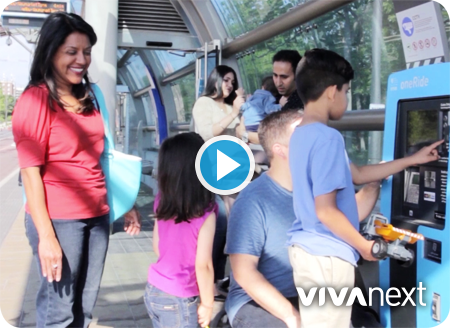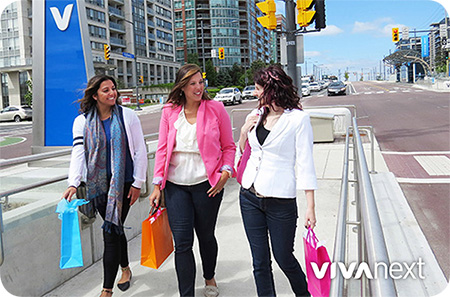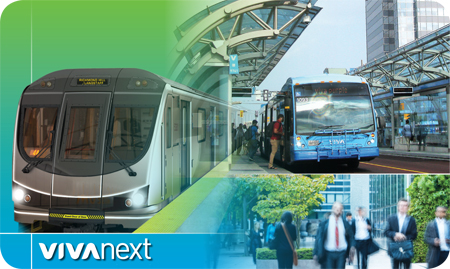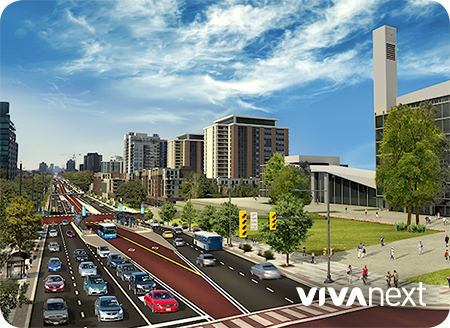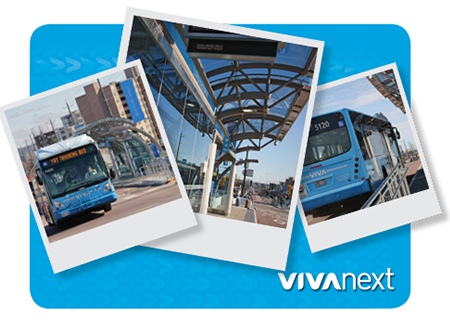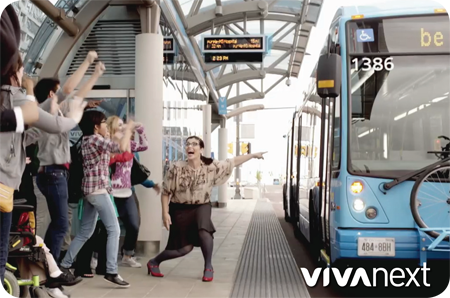
Who can remember? Not so long ago Highway 7 in Markham and Richmond Hill was a suburban highway: a few isolated developments, lots of parking lots and open fields, but no sidewalks, no plantings, no bike lanes–and certainly no dedicated rapid transit bus lanes. Just look at it now!
In only a few years from start to finish, construction begins and is completed on each of the rapidway projects. In the world of infrastructure renewal, vivaNext construction projects are known to be implemented very efficiently, and we’re doing everything we can to maintain that great reputation.
years of work are behind the design
What’s not so apparent to the public is the lengthy design process that happens long before construction starts. Design of the many engineering and architectural elements must take place stage by stage. Throughout, the designers need to balance staying true to the original vision with making it work in different conditions and geographical areas.
a variety of disciplines at work
VivaNext uses a multi-disciplined design team including: engineers who specialize in civil, traffic, structural, geotechnical, electrical and transit systems; architects; environmental consultants; landscape architects, security experts and more.
many stakeholders weigh in
At each stage, different options and features are reviewed, adjusted and improved with input from municipal staff, utility companies, local conservation authorities, property owners and others. Depending on the location of the project, specific design issues are addressed in conjunction with the owners of adjacent infrastructure including GO Transit, 407 ETR, CN, and the Ontario Ministry of Transportation.
the stages of each project
The process is not a fast one; the Environmental Assessment process, which established the conceptual design for vivaNext, was begun in 2002, and the whole process for any one segment from Preliminary Engineering to service start may take 6 or more years. Here’s an overview of the stages each of our projects go through, before shovels can hit the ground.
• Environmental Assessment [EA]: The EA examines alternatives and identifies a preferred design. The vivaNext conceptual design shows the approach for individual segments like the number of rapidway and traffic lanes, boulevards and planting zones and the arrangement of stops and stations. The EA then identifies potential design impacts on the natural and built environment, traffic, noise, drainage, property, etc., and proposed strategies to avoid or mitigate and monitor them.
• Preliminary Design: This stage takes design to approximately 30% completion and establishes the outlines of the project including its alignment and profile, what additional property is needed to build the project, development of major components like bridges or culverts for water crossings, entrances and intersections, utilities, and listing permits and approvals.
• Detail Design: This stage fleshes out the preliminary design for all elements. For example, preliminary design may identify that a high retaining wall will be needed at a specific location; 60% design will show the kind of foundation needed and the wall’s general construction; 90% design will show the colour and design of the material to be used on the outside of the wall, and 100% will show all details and specifications required to construct the work.
• Issued-for-Construction Drawings: These are the final design drawings to be used by the contractors, once all approvals are complete.
By the time vivaNext is complete, all our projects will share the original design vision, but their individual design will reflect local requirements and various conditions. Each segment is tailor-made to be functional, convenient and beautiful, with the primary goal of providing a rapid transit system for the future. Which is, and always has been, the ultimate vivaNext design objective.

